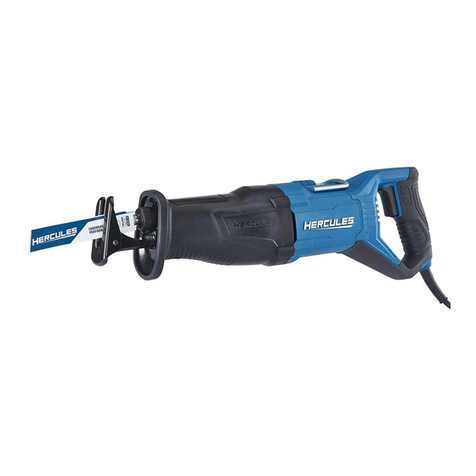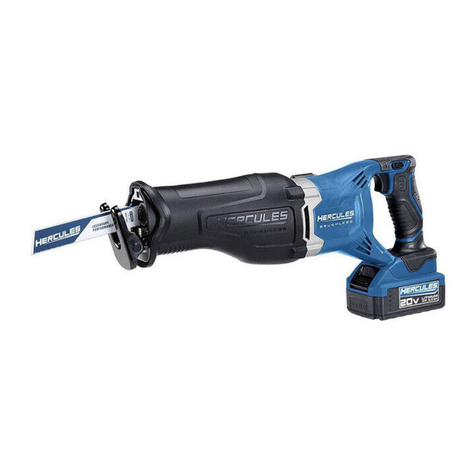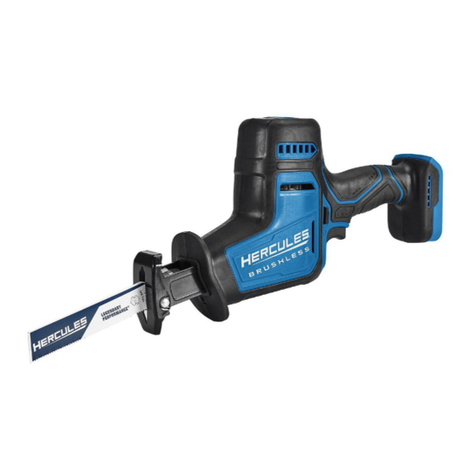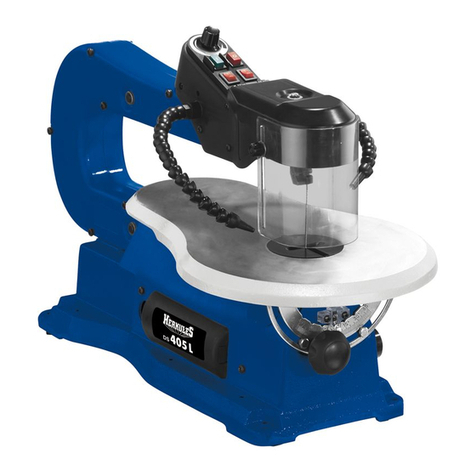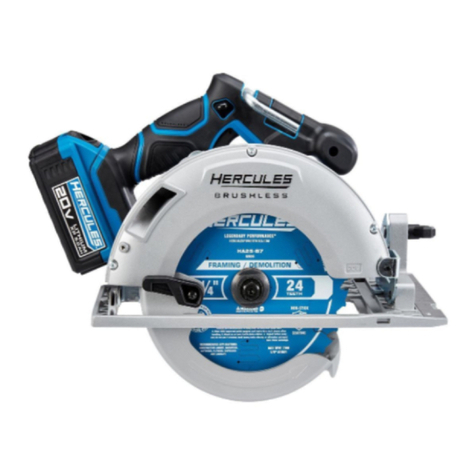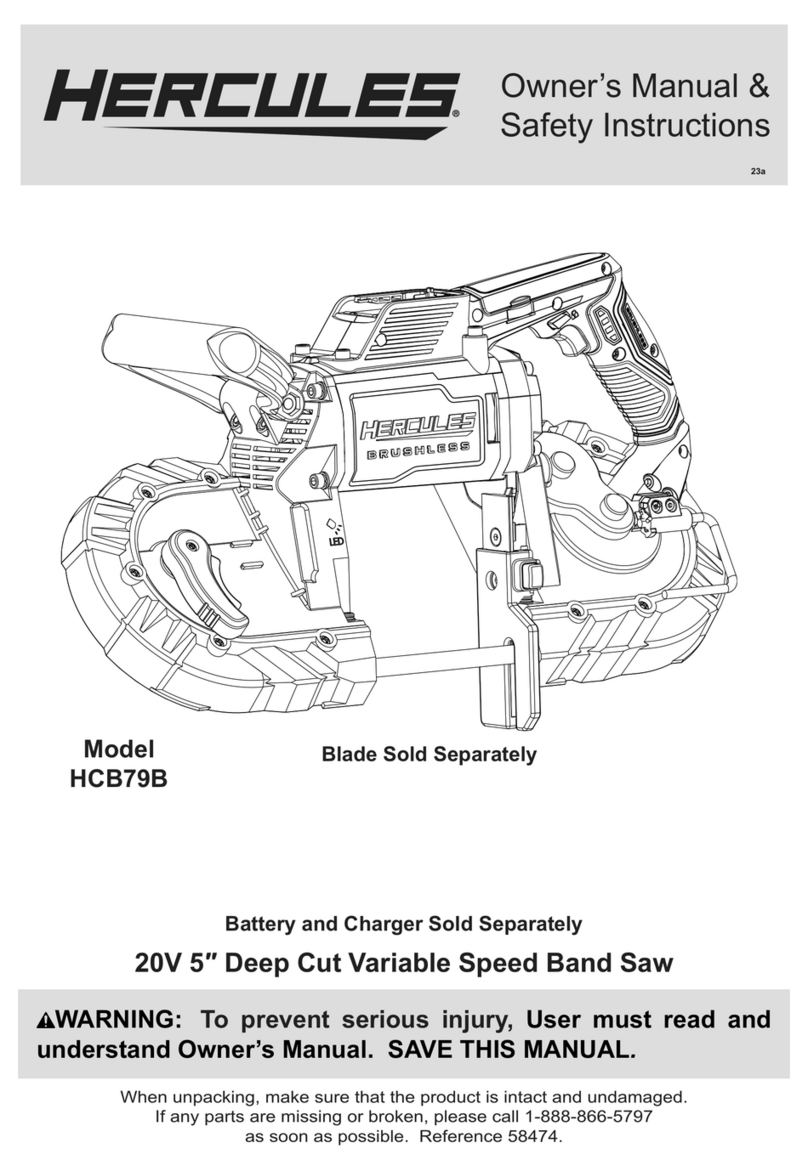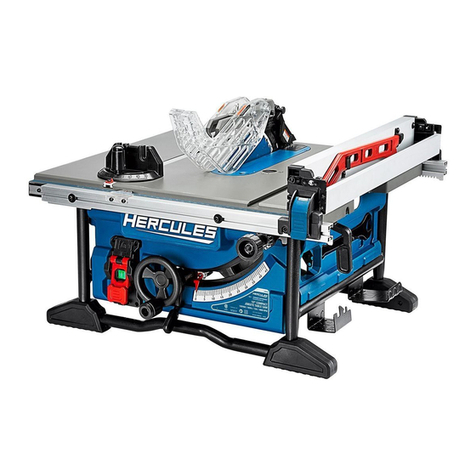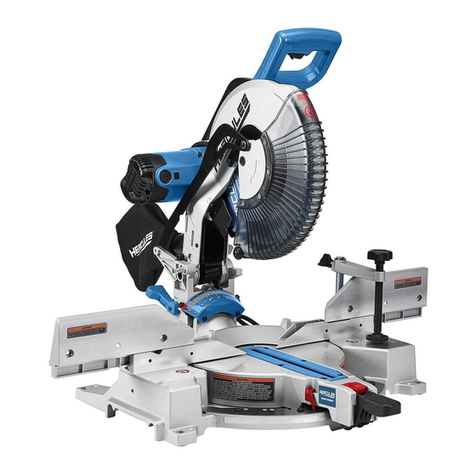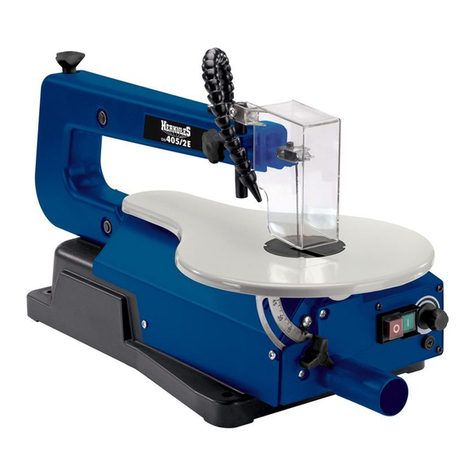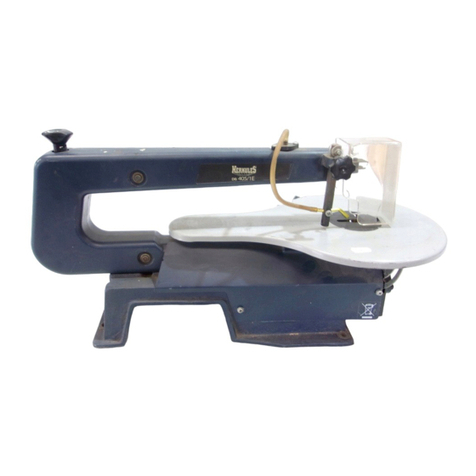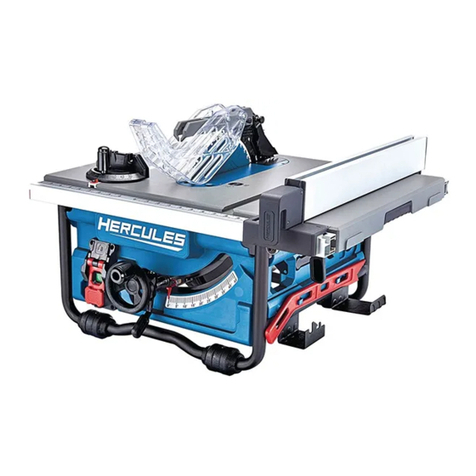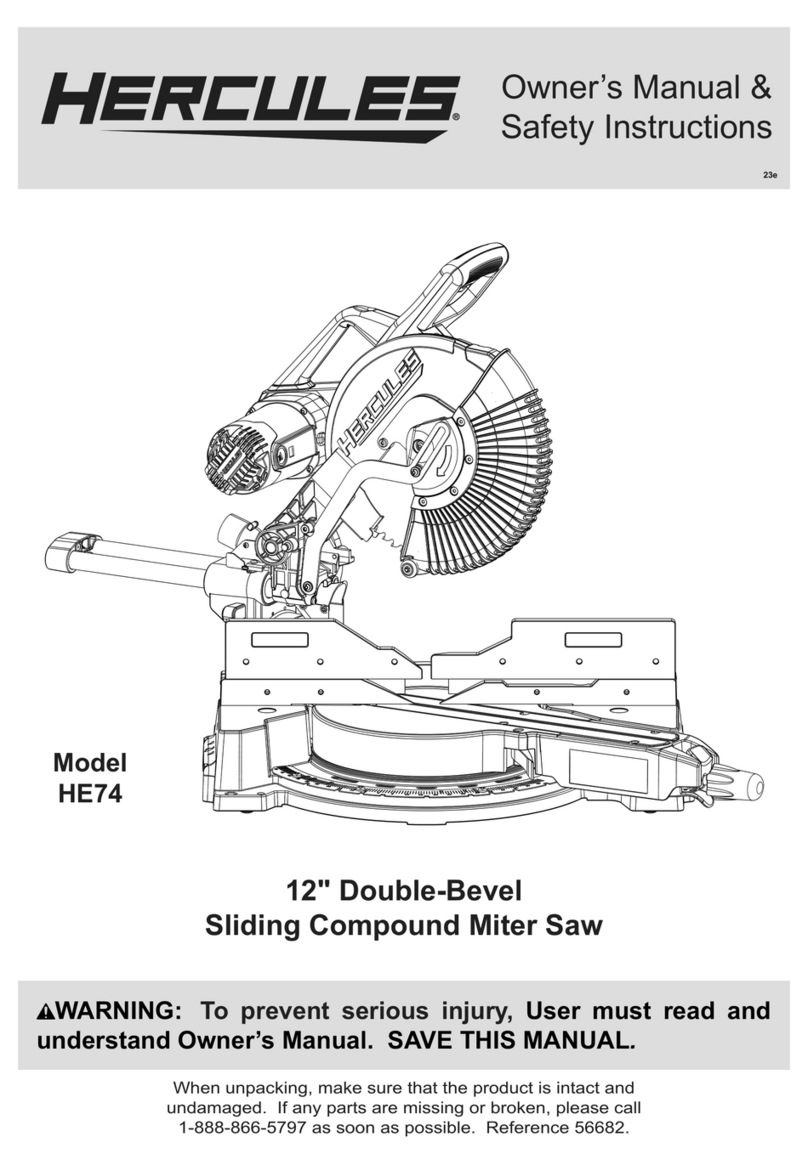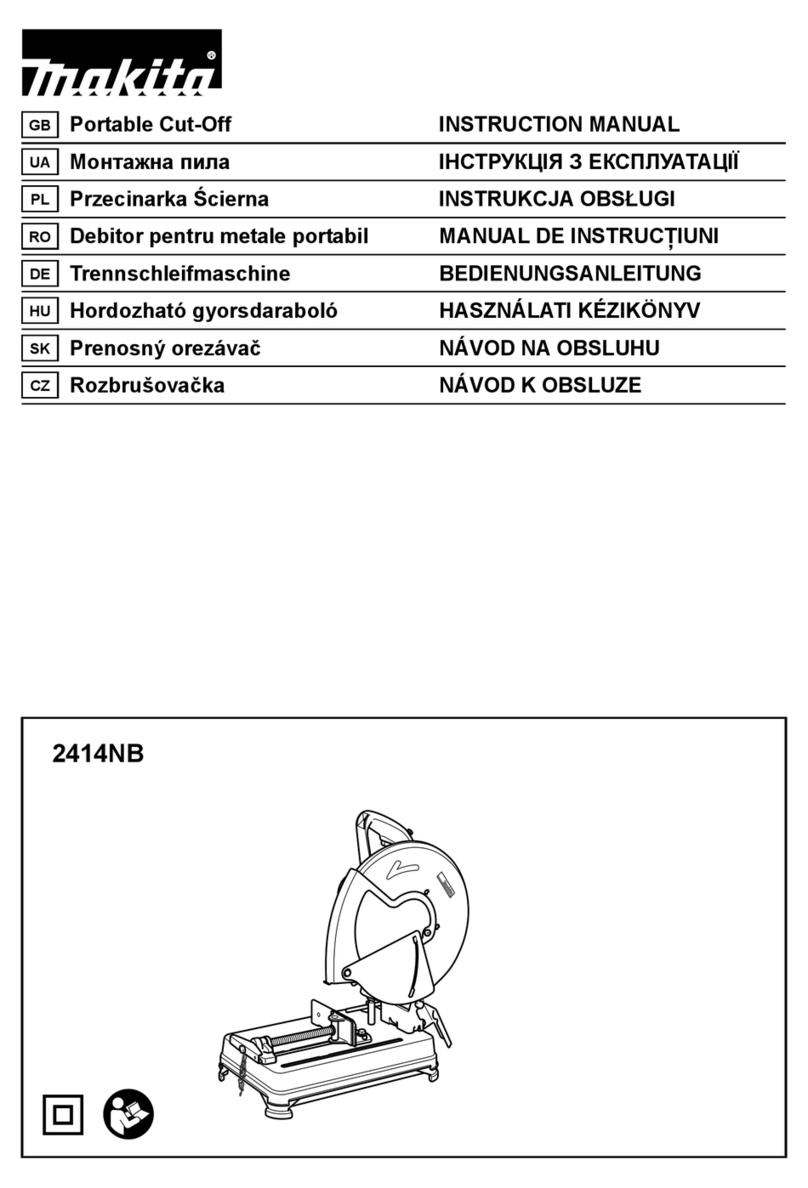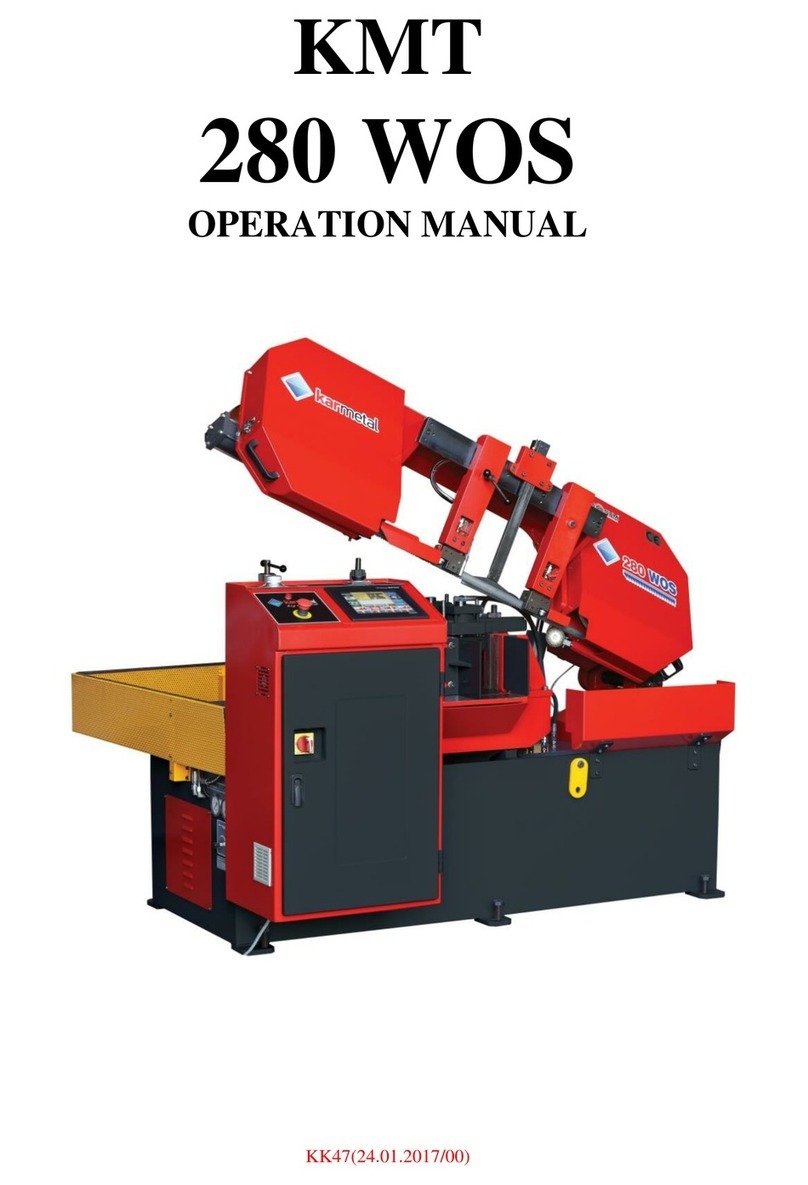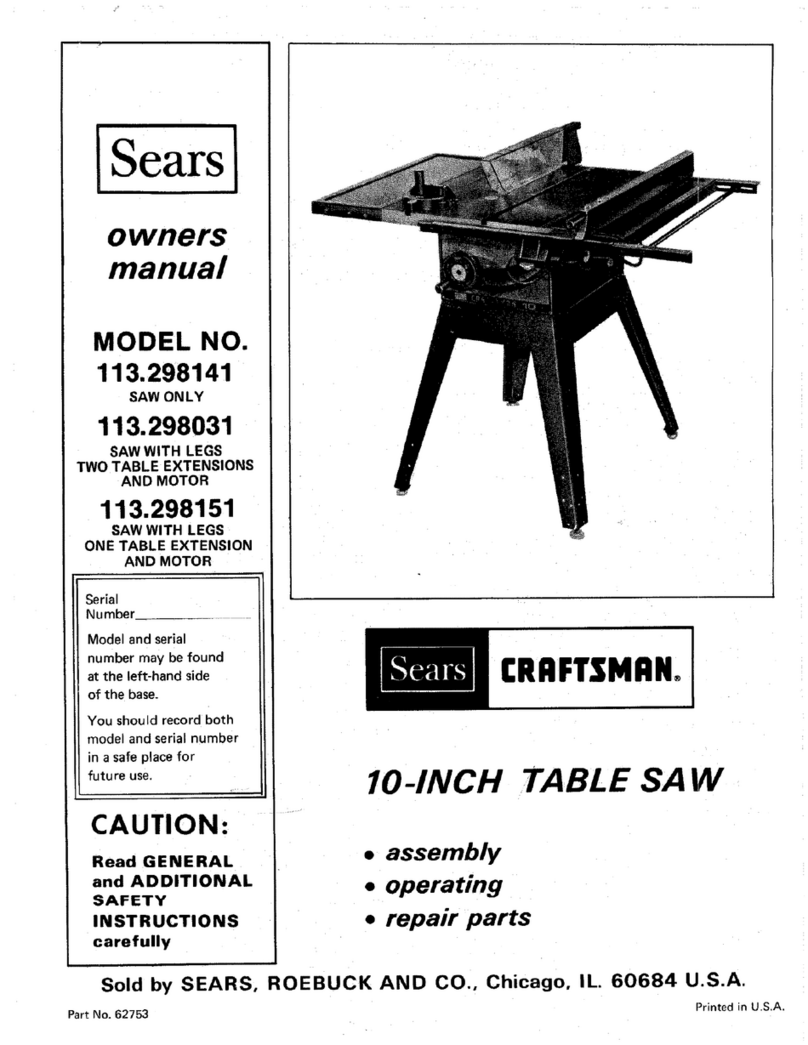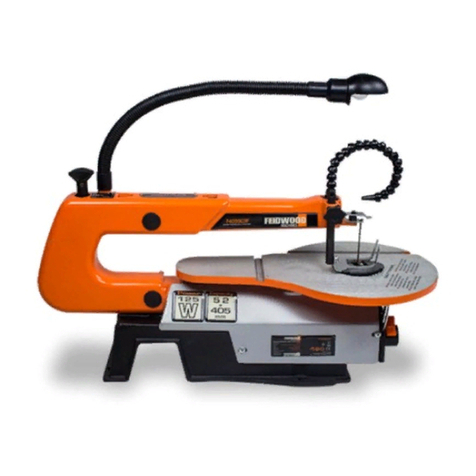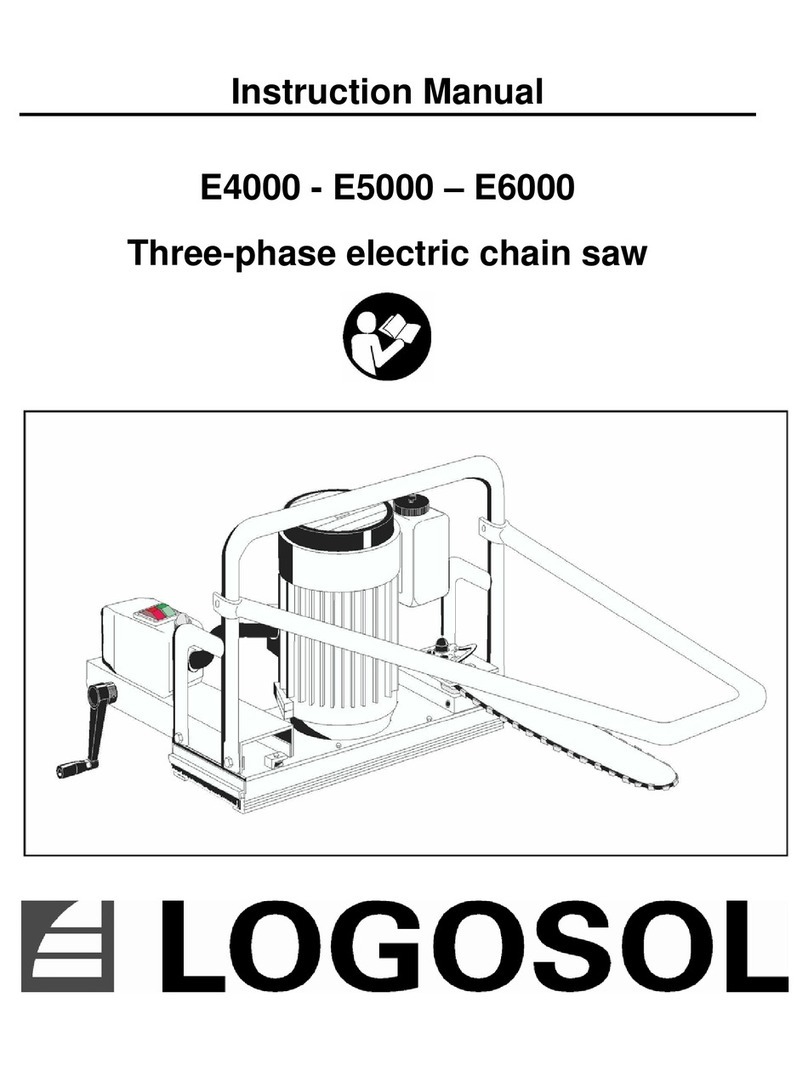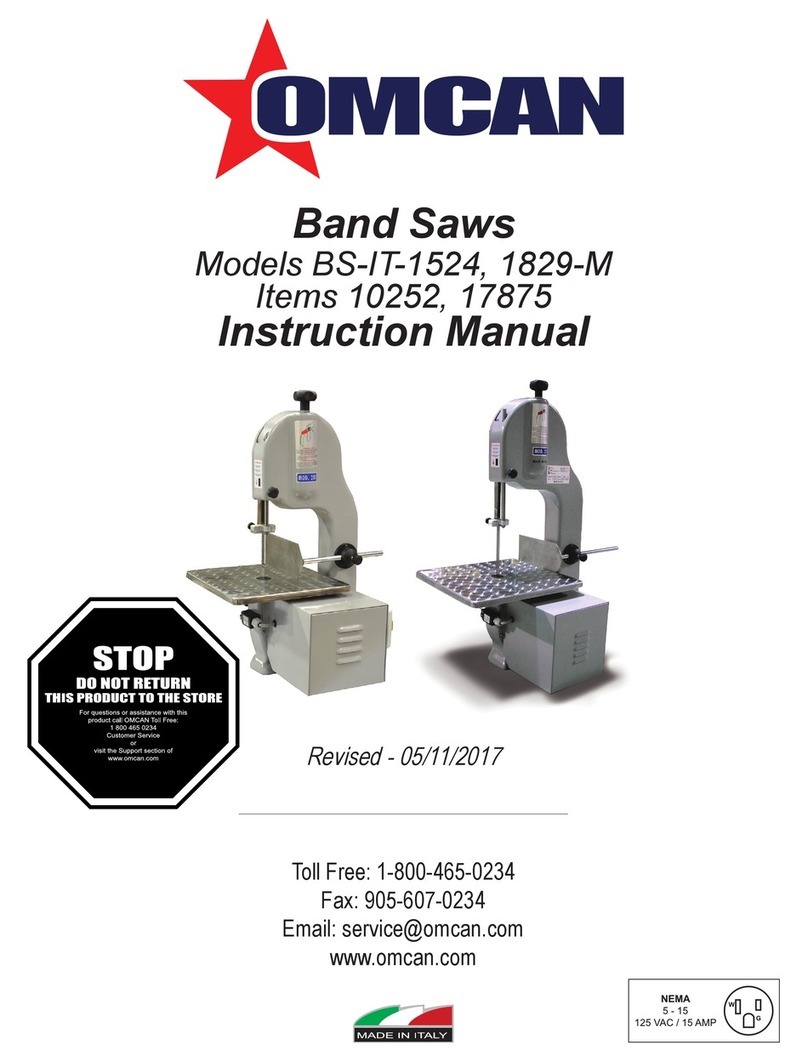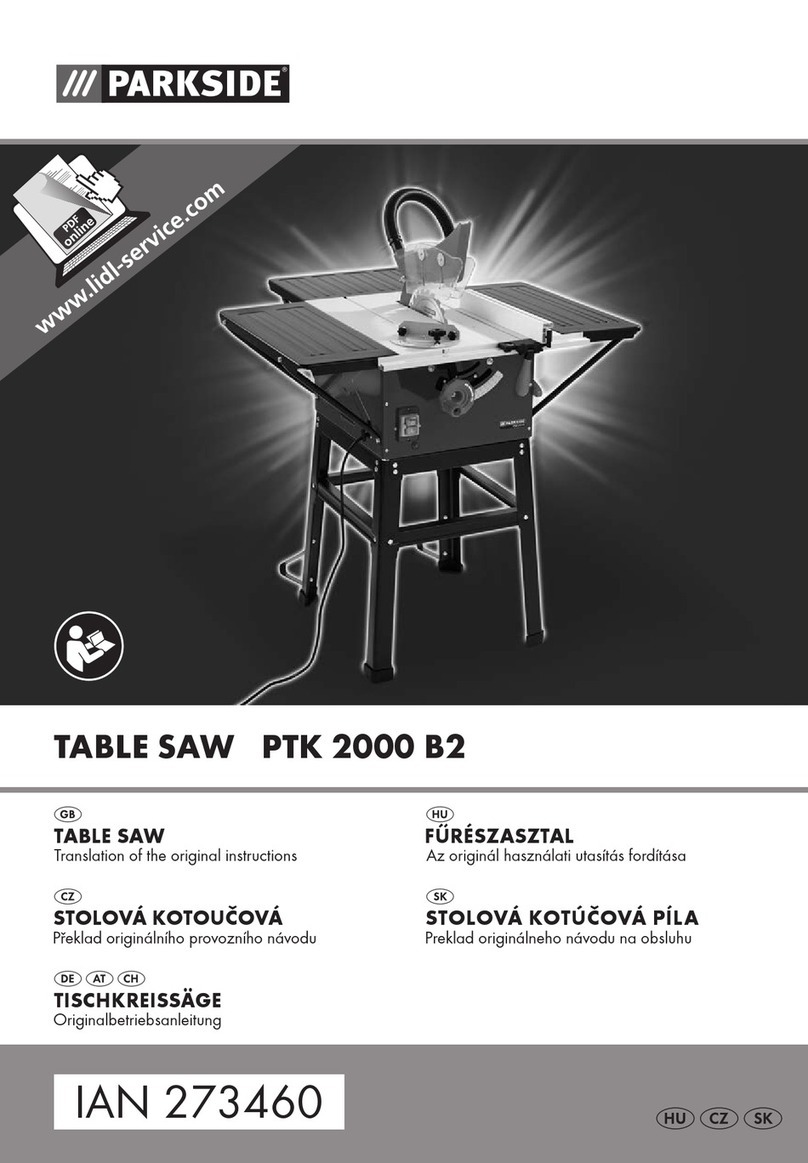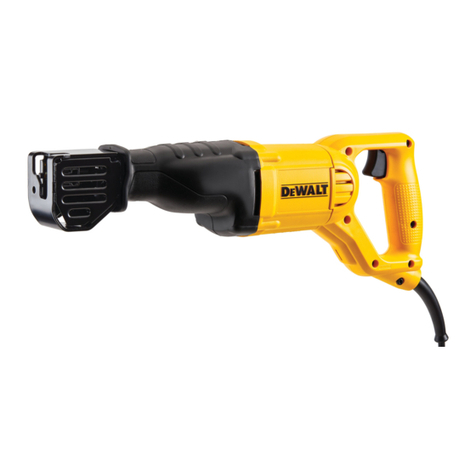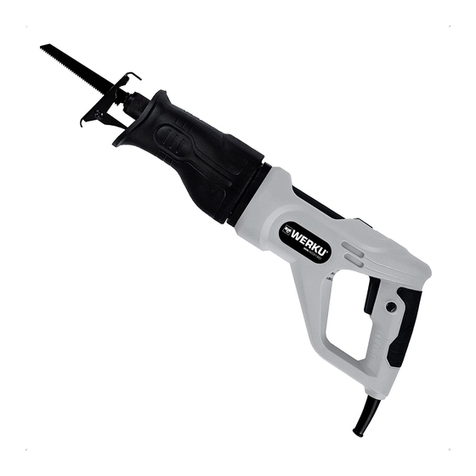GB
17
to the outlet of the extractor adapter (16).
앬To remove the saw blade guard, proceed in
reverse order.
Important!
The guard hood (2) must always be lowered
over the workpiece before you begin to cut.
7.3. Setting the splitter (Fig. 8/9)
앬Important! Pull out the power plug.
앬Set the blade (4) to max. cutting depth, move to
0° position and lock in place.
앬Remove the saw blade guard (see 7.3).
앬Take out the table insert (6) (see 7.5).
앬Slacken the fixing screw (20).
7.3.1. Setting for maximum cuts (Fig. 6/7/8)
앬Push up the splitter (5) until the gap between the
앬saw table (1) and the upper edge of the splitter
(5) equals approx. 10 cm.
앬The distance between the blade (4) and the
splitter (5) should be 3-8 mm.
앬Retighten the screw (20) and mount the table
insert (6) (Fig. 7).
7.4 Changing the table insert (Figure 6)
앬To prevent increased likelihood of injury the
table insert should be changed whenever it is
worn or damaged.
앬Remove the saw blade guard (2).
앬Remove the 2 countersunk head screws (34).
앬Take out the worn table insert (6).
앬To fit the replacement table insert, proceed in
reverse order.
7.5 Fitting/replacing the blade (Fig. 7)
앬Important! Pull out the power plug first.
앬Remove the table insert by undoing the two
countersunk head screws (see 7.5).
앬Undo the nut with a size 24 wrench on the nut
itself and a second fork wrench (size 13) on the
motor shaft (a) to apply counter-pressure.
앬Important! Turn the nut in the direction of
rotation of the saw blade.
앬Take off the outer flange and pull the old saw
blade off the inner flange by dropping the blade
at an angle.
앬Clean the blade flange thoroughly before fitting
the new blade.
앬Mount and fasten the new saw blade in reverse
order.
앬Important! Note the running direction. The
cutting angle of the teeth must point in
running direction, i.e. forwards (see the
arrow on the blade guard).
앬Refit and set the splitter (5) and the saw guard
(2) (see 7.3., 7.4.)
앬Check to make sure that all safety devices are
properly mounted and in good working condition
before you begin working with the saw again.
8. Operation
The underswing drag saw can be used as a drag
circular saw or as a bench-type circular saw.
앬It is used as a drag circular saw to make precise
and safe cuts in stationary workpieces, i.e. the
saw unit is moved.
앬It is used as a bench-type circular saw to make
longitudinal cuts in larger workpieces, i.e. the
saw unit is fixed and the workpiece is moved.
8.1. ON/OFF switch (Fig. 4)
앬To turn the saw on, press the green button .I. .
Wait for the blade to reach its maximum speed
of rotation before commencing with the cut.
앬To turn the machine off again, press the red
button “0”.
8.2. Cutting depth (Fig. 4)
앬Turn the hand crank (8) to set the blade (4) to
the required cutting depth.
Turn anti-clockwise: larger cutting depth
Turn clockwise: smaller cutting depth
8.3. Parallel stop
8.3.1. Stop height
앬The parallel stop (7) supplied with the bench-
type circular saw has two different guide faces.
앬For thick material you must use the stop rail (25)
as shown in Fig. 12, for thin material you must
use the stop rail as shown in Fig.11.
앬To change over the stop rail (25) to the lower
guide face you have to slacken the two knurled
screws (26) in order to disconnect the stop rail
(25) from the holder (24).
앬Remove the two knurled screws (26) through the
one slot (27) in the stop rail (25) and insert in the
other slot (31).
앬Remount the stop rail (25) on the holder (24).
앬The procedure for changing over to the high
guide face is similar.
8.3.2. Cutting width:
앬The parallel stop (7) has to be used when
making longitudinal cuts in wooden workpieces.
앬The parallel stop (7) can be mounted on either
side of the saw table (1).
앬The parallel stop (7) has to be mounted in the
guide rail (22) of the saw table (1).




















